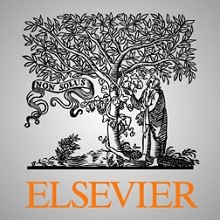
راه اندازی های دیجیتال
Abstract
1. Introduction
2. Theoretical background
3. Methods
4. Results
5. Discussion
6. Conclusions
Acknowledgements
Appendix 1. Survey sections and questions
Appendix 2. Interview sections and questions
References
Abstract
Digital startups launching original value propositions can test out and validate their business model using a recent and emerging set of practices known as Lean Startup Approaches (LSAs), which consist of Customer Development and the Lean Startup. While LSAs are gaining momentum in the ecosystem surrounding digital startups, they still suffer from poor theoretical foundations and operational issues that hinder their adoption and implementation. The aim of this study is to go beyond recalling anecdotal and single-case examples and, through mixed-methods research involving 227 digital startups, provide a first large-scale analysis of: (i) if and how digital startups apply Lean Startups Approaches; (ii) the ensuing results; (iii) the main advantages and disadvantages that stem from adopting and implementing LSAs; and (iv) how digital startups connect and combine the LSAs with other entrepreneurial approaches and tools for launching startups. The findings reveal that most of the sample has adopted LSAs and obtained several benefits from their use. A list of practical guidelines on how to solve the existing drawbacks and enhance the effectiveness of adopting and implementing LSAs is hence proposed. To conclude, a framework for organizing the empirical findings is put forward, where LSAs are inserted into the entrepreneurship theory debate on Effectuation, Entrepreneurial Bricolage and Opportunity Creation. Suggestions are then provided on how to sequence and bridge effectuation and causation logics and decisionmaking tools in an “entrepreneurial opportunities space”.
Introduction
Entrepreneurial endeavours carry with them an abundance of activities that entrepreneurs must perform in order to acquire tangible and intangible resources (Barney, 1991, 2001) and transform them into new ventures or startups. As the French philosopher Denis Diderot (1966) wrote, there are three principle means of acquiring knowledge available to us: observation of nature, reflection and experimentation. These mirror what is also required from entrepreneurs, as they need to observe their surroundings closely when trying to identify potential opportunities (Shane and Venkataraman, 2000). Once an opportunity has been detected, these entrepreneurs must think hard about how to combine their resources creatively and originally (Ireland et al., 2003) so that they become heterogeneous – i.e. they create value for customers, yet are rare and costly to imitate (Barney, 2001) – and on how to mould a value proposition and a startup around this unique pattern of resources. After this, entrepreneurs must test their design (Kerr et al., 2014) to see whether their startup is likely to create, deliver and capture value is a way that will be accepted by their target customers and, therefore, be viable. This final action is needed to validate the overall startup business model, in other words, its architecture of value (Ghezzi et al., 2015; Rappa, 2001; Teece, 2010). This part is particularly complex within the highly volatile context of digital entrepreneurship (Autio et al., 2018; Nambisan, 2017), where opportunities are quick to arise and vanish, combined resources unexpectedly acquire or lose their original value, and testing becomes a vital feature of the startup’s learning process (Contigiani and Levinthal, 2018).
